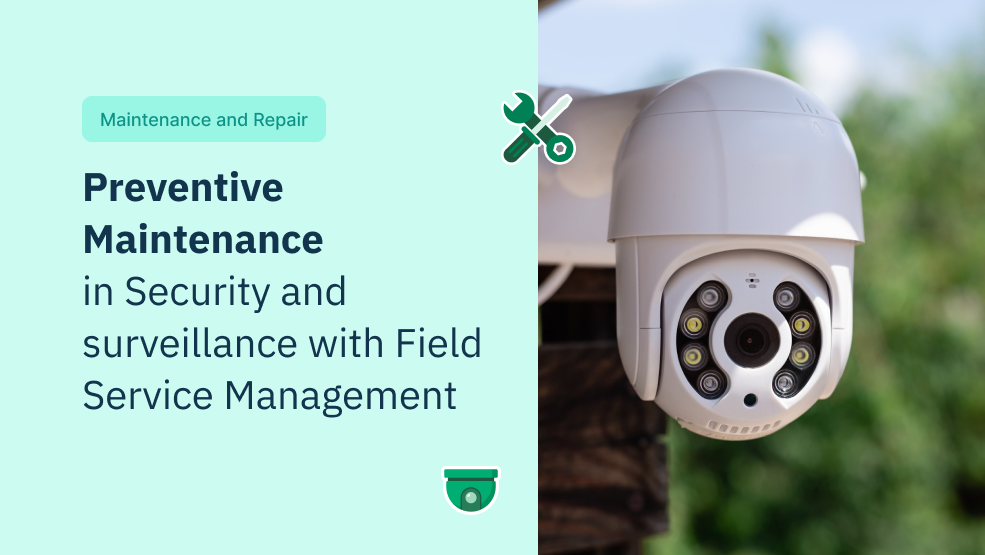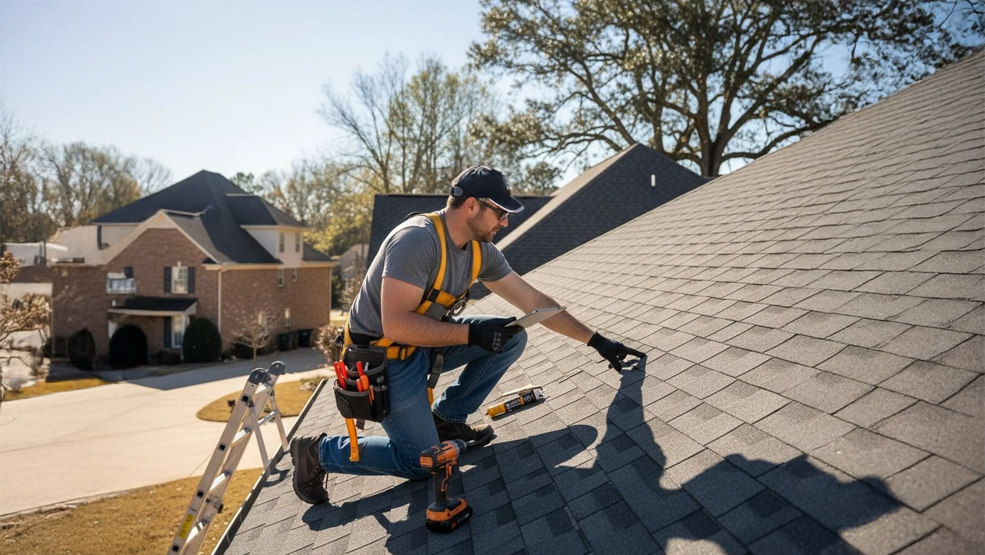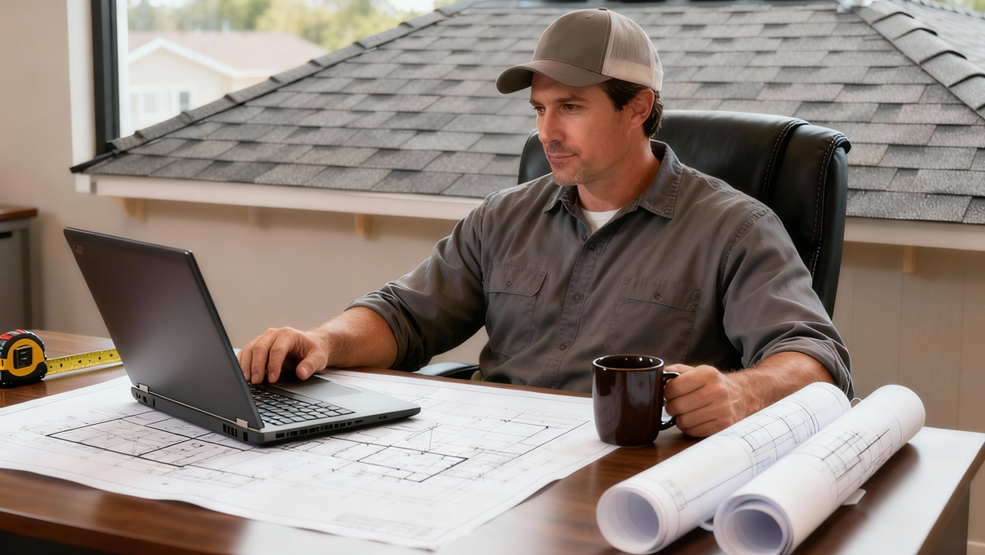Every business, every home, every individual relies on the watchful eye of surveillance systems to safeguard their livelihoods, their loved ones, and their peace of mind. But what happens when these systems falter, when glitches go unnoticed, and vulnerabilities go unchecked?
A false alarm, a technical glitch, and more—This scenario highlights the importance of preventive maintenance in security systems. This proactive approach helps to keep your security systems operational, reliable, and effective. In this blog, we’ll delve into what preventive maintenance entails and why it’s crucial for surveillance businesses. We will also provide a step-by-step guide to implementing it effectively.
But why does regular maintenance matter so much? Ah, let’s dive into the heart of the matter.
What is preventive maintenance?
In simple terms, preventive maintenance is taking care of your security system so that you catch any problems before they occur. Instead of waiting for things to go wrong, preventative maintenance focuses on extending the operational life of equipment. By performing inspections at regular intervals and making minor adjustments as necessary, you can ensure that security systems are in good working condition.
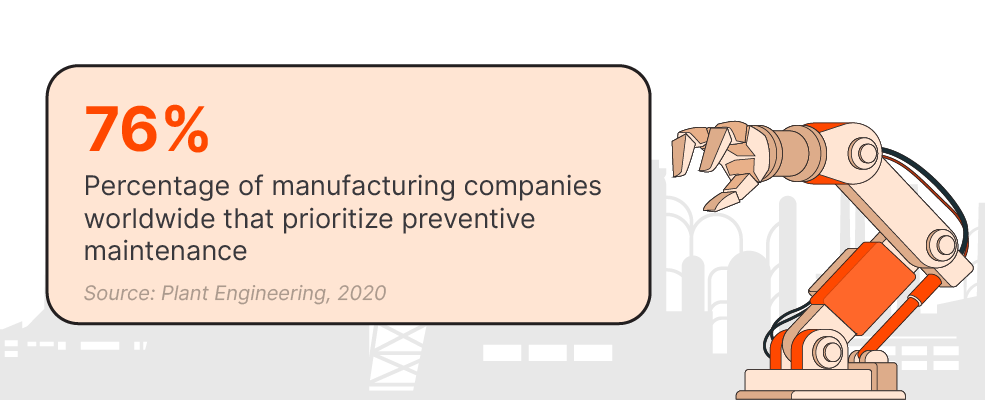
Most businesses rely on security devices to keep them safe. So, maintaining those systems is crucial. Regular preventive maintenance is key as it helps you catch problems early on and address them promptly before they turn into much larger problems. By keeping the equipment running and minimizing downtime, you will make sure that your customers are happy and stress-free.
Why does regular security system maintenance matter?
Preventive maintenance is routine and regular inspection of the security equipment’s condition. Your customers depend on you for their businesses and home safety—there is no room for mistakes. Let’s take a closer look at why you should prioritize preventive maintenance for your security and surveillance business.
1. Enhanced customer satisfaction
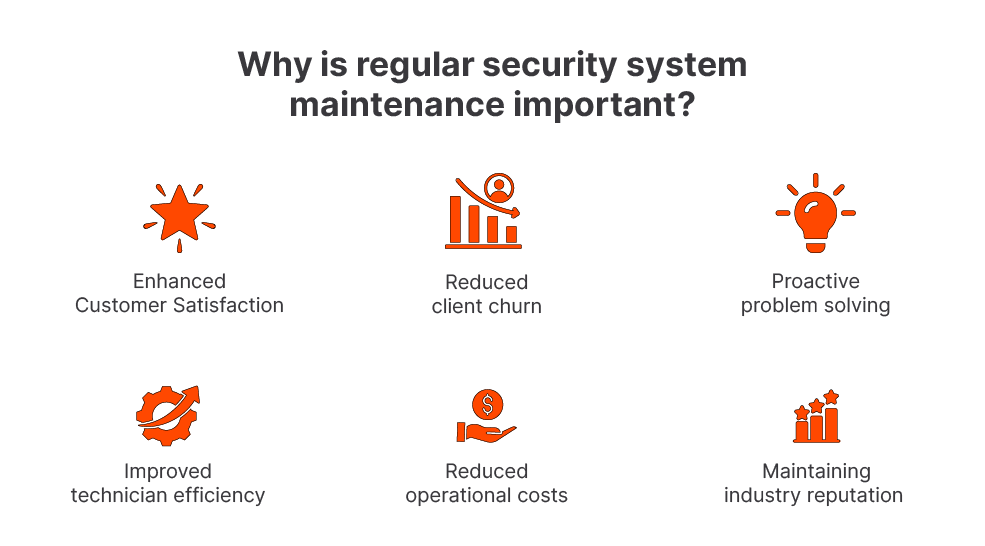
When your security system works smoothly, your customers feel safe and sound. That sense of reliability is priceless! A study by Capgemini shows that almost 8 in 10 consumers are willing to pay more for a better customer experience as big business falls short of expectations. Regular maintenance ensures that everything is working within specifications, reducing false alarms caused by malfunctioning systems. Equipment that is well-maintained gives your customers confidence in their security and peace of mind.
2. Reduced client churn
A glitch in a system, if left unnoticed, can lead to a security breach. It not only disrupts the operation but also shakes the trust your customers have in you. Routine maintenance helps eliminate those nightmares, keeping your clients happy and loyal.
“ Increasing customer retention rates by 5% increases profits by 25% to 95%.
– Frederick Reichheld of Bain & Company.”
3. Proactive problem solving
Regular maintenance helps you fix small issues before they turn big. The main goal of a preventive maintenance program is to detect potential problems early on and take proactive steps to avoid them. This shows you’re not waiting for a system to fail.
This proactive approach builds trust in customers and makes them a loyal advocate for your business. With a preventive maintenance program, you make this possible. By staying on top of things, you can stop potential issues early and show your customers the value you hold for them.

4. Improved technician efficiency
In business, time equals money. When the systems are well-maintained, your technicians don’t have to spend time dealing with the same problem over and over again. Instead, they can focus on more critical issues. That means happier customers and more time to grow your business.
5. Reduced operational costs
For instance, let’s say a camera glitch goes unnoticed by your customer. Over time, it may get worse, resulting in total camera failure, necessitating the need to replace the whole camera. With this, your customer incurs unnecessary expenses—leaving them frustrated. Routine inspection helps you identify and fix these minor issues and glitches before they turn into expensive repairs or replacements.

Every dollar matters in business, right? Regular maintenance might seem like an expense, but it’s actually an investment. By catching problems early, you can avoid costly fixes and keep your business running smoothly. Fewer false alarms mean less time wasted and more money in your pocket.
6. Maintaining industry reputation
Your reputation means everything in this business. Regular maintenance shows how serious you are about offering top-notch services to your customers. And when your customers trust you, word gets around. Soon enough, you’ll be the first name people think of when they need surveillance.
With proper care, the lifespan of your security equipment can be extended. Regular cleaning and upkeep will help reduce wear and tear, ensuring that your equipment lasts. Performing regular maintenance can translate into significant savings since the need to replace worn-out equipment will be minimized.
Step-by-step guide to maintaining your security system
This guide outlines a comprehensive approach to maintaining your security systems, ensuring peak performance and optimal client protection.
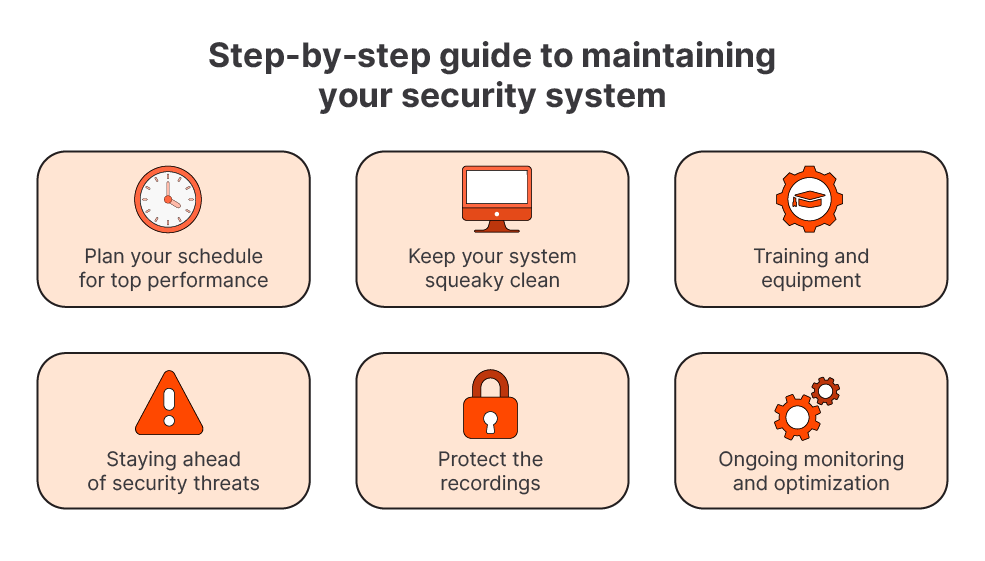
Step 1: Plan your schedule for top performance
First things first, creating a schedule is key to keeping the security systems in top shape. This ensures they work their best to keep your clients safe. Let’s go a bit further in these steps together.
Start by tailoring your maintenance plans to fit your customer’s system complexity. For homes, keep it simple with tasks like cleaning cameras and periodically checking access control. For businesses with more advanced setups, you will need a more detailed plan. Making sure that everything runs smoothly means regular inspections and testing.
Ensure that each part of the system is getting the attention it needs. Cleaning cameras monthly will guarantee that lenses are free of residue and that images are sharp. Access controls should be checked every quarter to make sure they are secure and within spec. By sticking to a schedule and assigning tasks carefully, you’ll cover all your bases.
Use technology to your advantage. Field Service Management (FSM) software is a great tool for managing your schedule. It allows you to set up a recurring job schedule so that you don’t have to assign jobs manually every time. You can keep clients in the loop by sending notifications automatically whenever maintenance is due. With digital calendar integration, you can make sure maintenance visits are set up efficiently, and clients are always in the know.
Step 2: Keep your system squeaky clean
The next crucial step is to keep your system squeaky clean by ensuring you inspect and clean it regularly. Let’s start with the inspection checklist.
First, create a checklist to guide you through the inspection process. This checklist should cover everything, from checking for physical damage to dust buildup and ensuring everything is securely mounted.
Check for physical damage, like cracks or loose parts, on all components, including cameras and cables. Dust can be a problem, too, so make sure to inspect lenses and sensors carefully. Secure mounting is vital to prevent any tampering or damage. Check for stability and make adjustments if needed. Lastly, keep an eye out for signs of wear and tear, such as frayed cables or rust, and fix them promptly.
To clean camera lenses, use gentle wipes or cloths to avoid scratching them. When it comes to biometric locks or keypad controllers, use wipes or solutions suitable for cleaning without causing damage. Make sure to keep buttons and sensors clean, so they work correctly. Depending on your setup, other components like cables or mounts may also need cleaning. Use the right tools and solutions for each part to ensure effective cleaning without any damage.
Don’t forget about training and equipment. It’s essential to provide your team with the proper training and tools for cleaning to ensure they do the job safely and effectively. By keeping the system clean and inspecting it regularly, you can ensure that it functions reliably.
Step 3: Training and equipment
Transitioning into the third step, it’s vital to ensure that your team is well-prepared for the cleaning procedures. This involves providing comprehensive training and supplying them with the necessary equipment. Equipping your team with the right knowledge and tools is essential to guarantee the effectiveness and safety of the cleaning process.
To elaborate further, team members should receive thorough training on proper cleaning techniques and safety precautions. This training should cover everything from handling cleaning solutions to preventing accidents and damage to sensitive equipment.
Moreover, it’s crucial to ensure that they have access to specialized cleaning equipment, such as microfiber cloths and electronic-friendly cleaning solutions. These tools are vital for accessing hard-to-reach areas and maintaining the system to a high standard.
Step 4: Staying ahead of security threats
Start by setting up automated notifications for firmware updates. These notifications are your first line of defense against security threats. They alert you promptly when manufacturers release updates with crucial security patches.
With automated notifications, you don’t have to keep checking websites or forums manually. This proactive approach helps you keep your system secure and functioning smoothly, protecting against potential vulnerabilities.
Before you roll out firmware updates to client systems, it’s crucial to test them thoroughly in a controlled environment. This testing phase helps identify any compatibility issues or problems that could arise later. By testing updates in real-world scenarios, you can reduce the risk of disruptions or vulnerabilities for your clients.
Testing before deployment ensures that updates are implemented smoothly, minimizing any unexpected issues or downtime. This proactive approach boosts system reliability and gives your clients confidence in the stability of their security setup.
Keep your clients in the loop about major updates to foster trust and confidence in your services. Your clients depend on your expertise to keep their systems secure and functional. That’s why it’s important to communicate openly with them about any significant changes. Before deploying major updates, seek approval from your clients to show respect for their concerns and preferences.
This involvement lets them feel in control of their security infrastructure. Clear communication about the implications of updates helps clients understand the potential benefits and risks, empowering them to make informed decisions. Prioritizing client communication helps build strong relationships based on transparency and mutual trust.
Step 5: Protect the recordings
When keeping your recordings safe, having a good backup plan is super important. Firstly, you need to determine how much storage space you’ll need by looking at how much footage you usually record. This way, you’ll know you have enough room to store everything without running out of space.
Then, ensure you follow the legal rules about how long you need to keep your recordings. Laws can vary, so knowing what’s required where you are is essential. Once you’ve got that sorted, it’s time to plan how often you’ll back up your data, how long you’ll keep it, and where you’ll store it. Having clear guidelines ensures your footage stays safe and easy to find when needed.
Now, let’s talk about the best ways to keep your recordings secure. Cloud Storage is a great option because it lets you access your footage from anywhere with an internet connection. Plus, storing it on multiple servers means even if one fails, your data is still safe.
You can also use Local NAS Devices, which keep your footage stored right where you are. This makes it easy to manage and access your recordings without worrying about internet issues or depending on outside companies.
And don’t forget about encryption! This adds an extra layer of security by scrambling your data so only authorized people can read it, keeping your recordings safe from anyone trying to sneak a peek. By following these steps, you can make sure your recordings are always safe and ready for whenever you need them.
Step 6: Ongoing monitoring and optimization
Transitioning to the sixth step, maintaining peak performance, requires continuous monitoring and optimization. This ongoing process is key to ensuring the long-term reliability and effectiveness of your security system.
Regular monitoring of system performance allows for the early detection of potential issues or areas needing attention. This involves conducting routine checks of system components and reviewing system logs for irregularities.
Additionally, staying informed about industry advancements and best practices is crucial. By keeping abreast of technological developments and emerging threats, you can adapt your maintenance procedures to incorporate the latest advancements and enhance system security.
Furthermore, continuous optimization of maintenance strategies is essential for ongoing reliability and client satisfaction. By periodically reviewing and refining maintenance procedures based on feedback and performance data, you can identify areas for improvement and implement enhancements. This iterative process ultimately improves the efficiency and effectiveness of your maintenance efforts, ensuring the overall performance and reliability of your security system.
Wrapping up
Keeping up with preventive maintenance is super important for any surveillance business. It means making sure your security systems work well all the time, which keeps your clients safe and helps your business grow. Remember, it’s better to prevent problems than to fix them later, especially when it comes to security. By following the steps we talked about in this blog, you can make your preventive maintenance program strong and effective, making sure your clients stay protected and your business keeps flourishing.
